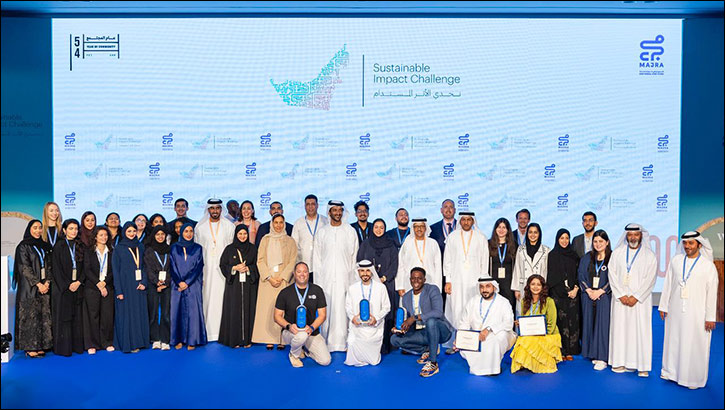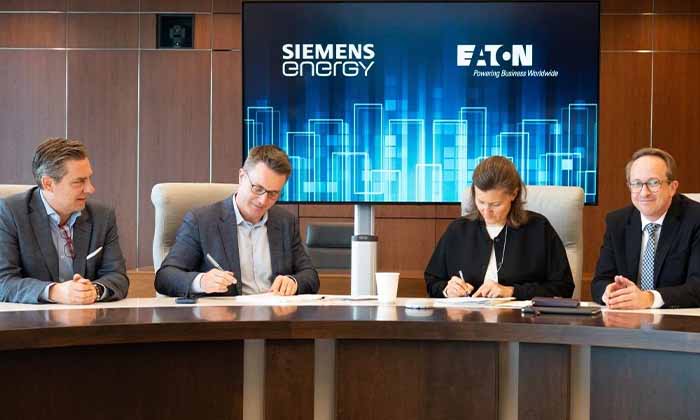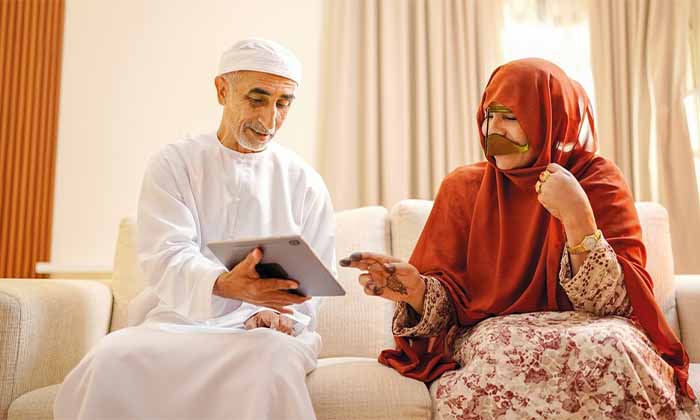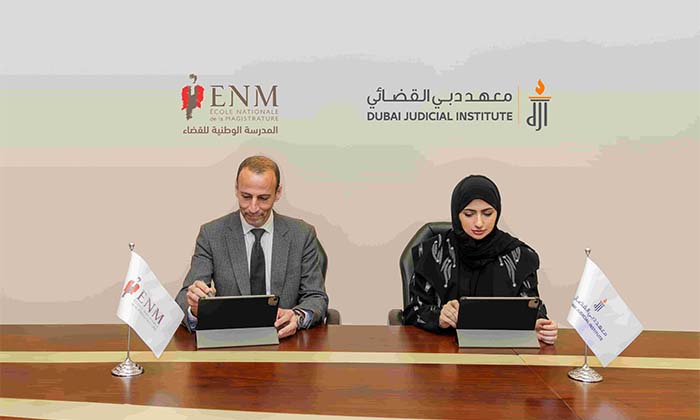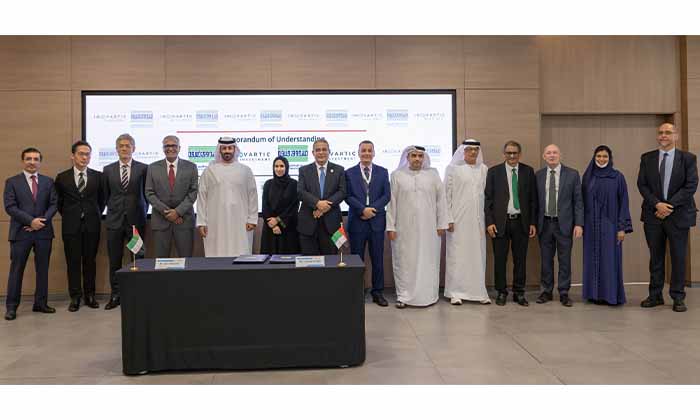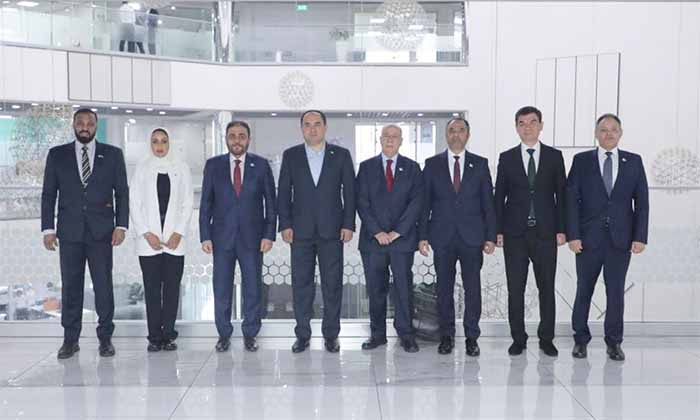Solution proposed will produce sustainable seafood and algae in a desert environment in regional first
Riyadh, (03 October 2021): The Red Sea Development Company (TRSDC), the developer behind the world’s most ambitious regenerative tourism project, has signed two Memorandum of Understandings (MoU) with Blue Planet Ecosystems (BPE).
Signed by John Pagano, CEO of TRSDC and Paul Schmitzberger, CEO of BPE, the first MoU sees the entities pledging to investigate the implementation of a viable solution for Sustainable High Tech, CO2 Negative Fish Production. The Blue Planet Ecosystems’ solution proposed will provide sustainable production of seafood and algae production in a desert environment.
“In response to growing consumer demand for sustainable protein and to further contribute to the long-term protection and enhancement of ocean biodiversity, TRSDC strives to explore innovative technology solutions. Our partnership with Blue Planet Ecosystems, means working together to set a new global standard in sustainable, multitrophic desert aquaculture where we can literally turn sunlight into seafood,” said John Pagano, CEO of TRSDC.
The Land-based Automated Recirculating Aquaculture (LARA) system works by replicating natural aquatic ecosystems in a modular and automated system. LARA coverts CO2 directly into chemical-free seafood using phyto and zooplankton as transitional stages.
It is constructed of a tower of three horizontal units. The top unit uses the sun’s energy to grow microalgae which powers the entire system. The microalgae is then moved to the next unit down, where it nourishes zooplankton. Finally, the zooplankton is then transported to the bottom unit, where it is eaten by fish.
“The LARA system has a minimal environmental footprint and will not only help feed our guests and residents sustainably but will aid in carbon sequestration for our flagship destination as well as future projects on the Red Sea coast, in alignment with the company’s aspiration to achieve 100 percent carbon neutrality,” added Pagano.
Algae can consume more carbon dioxide than trees because it can cover more surface area and grow faster. Certain species of microalgae have been shown to efficiently remove CO₂ at a rate of more than 10 times higher than terrestrial plants.
The first phase of the project will be implemented as a 3.500m2 pilot, to assess whether conditions at The Red Sea Project are suitable for the solution to work effectively and efficiently. This will be the first LARA pilot outside Europe to undergo a commercial trial.
Paul Schmitzberger, CEO of Blue Planet Ecosystems, said: “It is fascinating to see what can be achieved when innovation meets a clear vision for a sustainable future. The Red Sea Project is demonstrating how the destination of the future will look and operate.”
"At the Red Sea Project site, the conditions are perfect to pilot and establish our desert farming technology - to demonstrate our joint vision of turning sunlight into seafood. We are looking forward to this amazing development journey and feel proud to be making our contribution to a global movement," added Schmitzberger.
The second MoU signed was to acknowledge TRSDC and BPE’s intention to jointly participate in the XPRIZE Carbon Removal competition funded by Elon Musk’s Musk Foundation. The competition, which has prize money of $100 million, is aimed at tackling the biggest problem facing humanity - climate change and rebalancing the Earth’s carbon cycle. As this aligns with TRSDC’s and BPE’s goals, the two parties will enter the competition as one team.
The partnership with BPE follows a collaboration with SOURCE Global earlier this year to enable the destination to serve the world’s first truly renewable bottled water. SOURCE water is produced using patented solar technology that draws pure water vapor out of the air and converts it to premium, mineralized drinking water.
Located on site at The Red Sea Project, the SOURCE facility, powered by renewable energy, will have a capacity of 2 million 330ml bottles annually and will initially produce 300,000 bottles a year. The reusable glass bottles will be refilled on site as part of a fully circular sustainable distribution model. Water harvesting and bottling will generate zero carbon and zero single-use plastic bottles.
Activity for the first phase of The Red Sea Project is well underway and is on track to be completed in 2023, preceded by the opening of our first hotels at the end of next year. The project has surpassed significant milestones, with over 600 contracts signed to date, worth over SAR 17 bn ($4.5bn).
Upon completion in 2030, The Red Sea Project will comprise 50 resorts, offering up to 8,000 hotel rooms and more than 1,000 residential properties across 22 islands and six inland sites. The destination will also include an international airport, luxury marinas, golf courses, entertainment, and leisure facilities.
- ENDS -
About:
The Red Sea Development Company (TRSDC - www.theredsea.sa) is a closed joint-stock company wholly owned by the Public Investment Fund (PIF) of Saudi Arabia. TRSDC was established to drive the development of The Red Sea Project, a luxury, regenerative tourism destination that will set new standards in sustainable development and position Saudi Arabia on the global tourism map.
The project is being developed over 28,000 km2 of pristine lands and waters along Saudi Arabia’s west coast and includes a vast archipelago of more than 90 pristine islands. The destination also features sweeping desert dunes, mountain canyons, dormant volcanoes, and ancient cultural and heritage sites. It is designed to include hotels, residential properties, leisure, commercial and entertainment amenities, as well as supporting infrastructure that emphasizes renewable energy and water conservation and re-use, as well as a circular waste management system to achieve zero waste to landfill.
Activity for the first phase of development is well underway and is on track to be completed by the end of 2023. The project has surpassed significant milestones, with over 600 contracts signed to date, worth over SAR 17 bn ($4.5bn).
The 100-hectare Landscape Nursery, which will provide more than 15 million plants for the destination, is fully operational. There are more than 9,000 workers currently on-site and 80km of new roads are now complete, including the new airport road, to better connect the destination. The Construction Village, capable of housing 10,000 workers, is now open and development is progressing well at the Coastal Village, which will be home to around 14,000 people who will eventually work at the destination.
Contact details:
For more information please contact:
Rebecca Cousins : Director – PR & Communications Rebecca.Cousins@theredsea.sa
